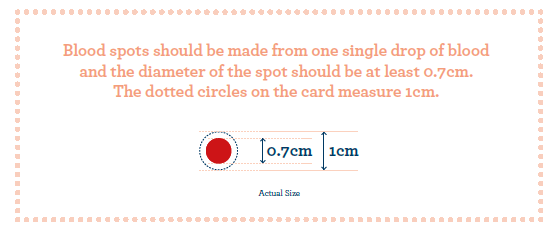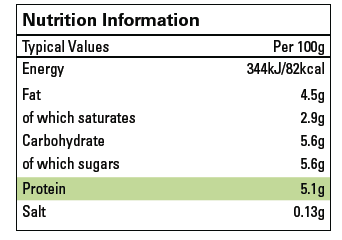Sometimes food labels will state that the product contains protein. However, the ingredients list may be made up of foods which you know are protein-free. If this is the case, the food can be eaten without contributing towards your protein allowance.
To work out if a food needs to be counted towards your protein allowance look at the protein content on the label. If the protein is 0.5g or less per 100g, then this food is classed as protein free (please note, this does not apply to plant-based alternatives to milk, please speak to your dietitian about this). However, if it is over 0.5g per 100g, then you will need to calculate the total number of grams of protein in the amount of food that you eat. The protein content will be listed per 100g of the food, and also per serve. Check what the serve size is and compare this to the serve size that you would eat. Your dietitian will tell you how many grams of protein you are allowed to eat each day.
The PKU Handbook (ASIEM) provides a comprehensive list of products which are protein free and has further information on reading food labels.
Calculating Protein in Foods
Knowing a food’s protein content per 100g, enables you to calculate how much of that food provides ONE gram of protein.
For example, look at the yoghurt nutritional panel below –
Nutrition Information (Average) 720g tub of Boysenberry Yoghurt (Serving Size: 90g, Servings per pack: 8)
| Nutritional Information |
per Serve (90g)
|
Per 100g |
| Energy (kj) |
559 |
622 |
| Protein (g) |
5.3 |
5.9 |
| Fat (g) |
5.1 |
5.7 |
| of which are saturates (g) |
3.6 |
4.0 |
| Carbohydrate (g) |
16.4 |
18.2 |
| of which are sugars (g) |
15.1 |
16.7 |
| Fibre (g) |
0.27 |
0.3 |
| Sodium (mg) |
57 |
64 |
This yoghurt contains 5.9g of protein per 100g. So, 100 ÷ 5.9 = 17g
Therefore, 17g is equal to 1 gram of protein.
The nutrition panel also tells you that one serve contains 5.3g, one serve being 90g of yoghurt.
The next example, is another yoghurt, nutritional panel below –
Nutrition Information (Average) 600g tub of dairy free Coconut Yoghurt (Serving Size:125g, Servings per pack: 4)
| Nutritional Information |
per Serve (125g)
|
Per 100g |
| Energy (kj) |
676 |
541 |
| Protein (g) |
1.2 |
0.9 |
| Fat (g) |
12.1 |
9.7 |
| of which are saturates (g) |
10 |
8.7 |
| Carbohydrate (g) |
8.1 |
6.5 |
| of which are sugars (g) |
2.4 |
2.0 |
| Fibre (g) |
0 |
0 |
| Sodium (mg) |
19 |
15 |
This yoghurt contains 0.9g of protein per 100g. So, 100 ÷ 0.9 = 111g
Therefore, 111g is equal to 1 gram of protein.
The nutrition panel also tells you that one serve contains 1.2g, one serve being 125g of yoghurt.
Read less



